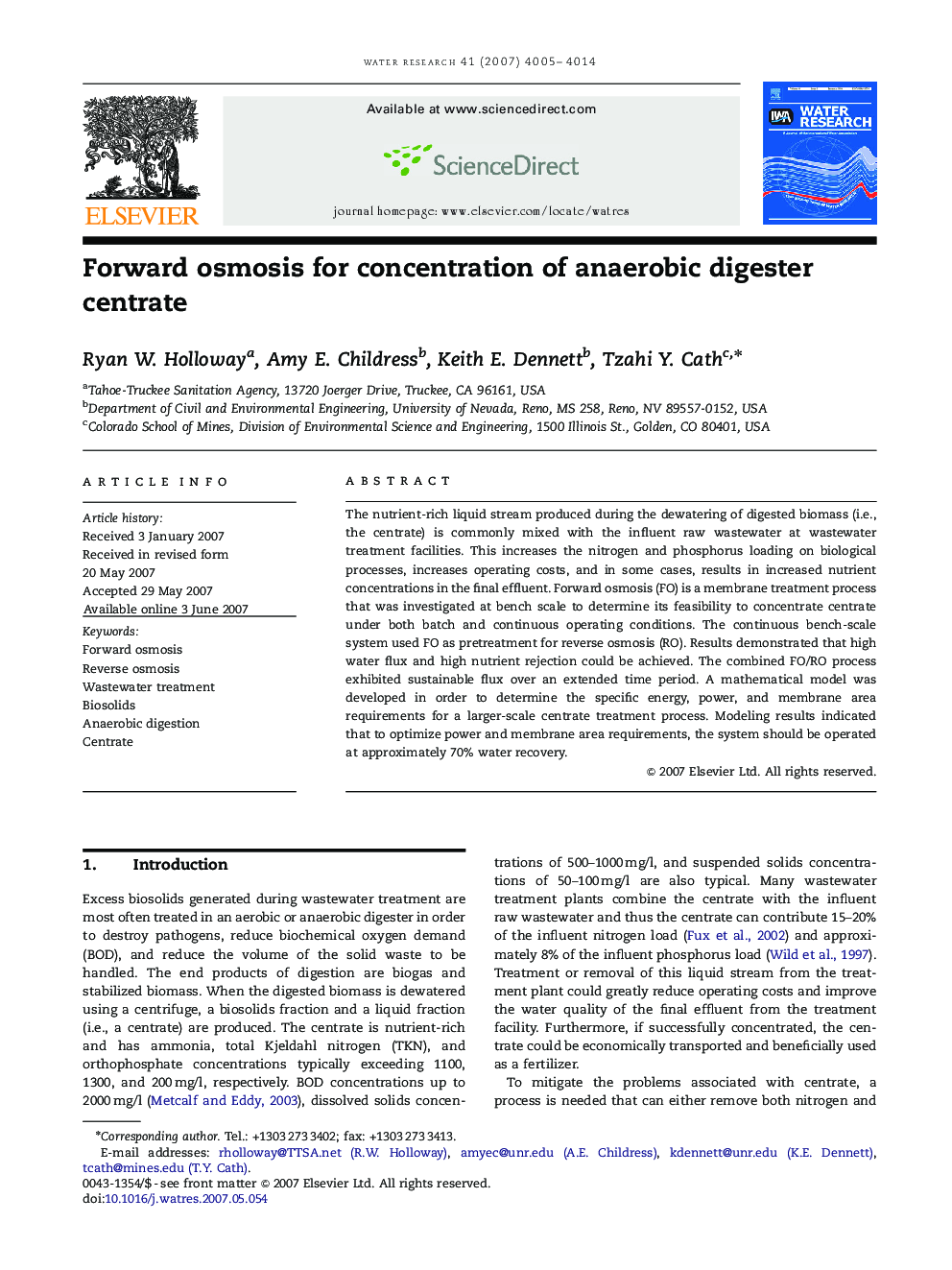| Article ID | Journal | Published Year | Pages | File Type |
|---|---|---|---|---|
| 4486086 | Water Research | 2007 | 10 Pages |
The nutrient-rich liquid stream produced during the dewatering of digested biomass (i.e., the centrate) is commonly mixed with the influent raw wastewater at wastewater treatment facilities. This increases the nitrogen and phosphorus loading on biological processes, increases operating costs, and in some cases, results in increased nutrient concentrations in the final effluent. Forward osmosis (FO) is a membrane treatment process that was investigated at bench scale to determine its feasibility to concentrate centrate under both batch and continuous operating conditions. The continuous bench-scale system used FO as pretreatment for reverse osmosis (RO). Results demonstrated that high water flux and high nutrient rejection could be achieved. The combined FO/RO process exhibited sustainable flux over an extended time period. A mathematical model was developed in order to determine the specific energy, power, and membrane area requirements for a larger-scale centrate treatment process. Modeling results indicated that to optimize power and membrane area requirements, the system should be operated at approximately 70% water recovery.
